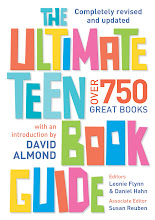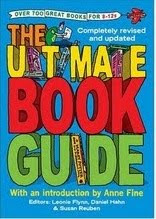 This book has garnered a lot of press attention because it's the first ever collaboration between veteran picture book author / illustrators John Burningham and Helen Oxenbury - the first ever, despite the fact that they're married to each other.
This book has garnered a lot of press attention because it's the first ever collaboration between veteran picture book author / illustrators John Burningham and Helen Oxenbury - the first ever, despite the fact that they're married to each other.
I always feel slightly anxious when approaching a book that is the result of two fantastic writers or illustrators working together for the first time. I worry in case the book isn't as totally outstandingly brilliant as it ought to be - in case my expectations are not matched by the reality.
So does this apply in the case of There's Going to be a Baby?
The story is an original take on the books-to-read-to-your-child-to-prepare-them-for-a-new-sibling genre. It takes the form of a conversation between a small boy - he looks about 2 and a half / three years - and his mother. The exchange is an ongoing one - it lasts from the first announcement "There's going to be a baby" to the birth. As the book progresses, the seasons change and the mother's bump grows gradually bigger. I would have liked the mother's maternity wardrobe when I was pregnant - she is very chic.
The conversation centres mostly on whimsical speculation about what the baby might become when it grows up. Interspersed with this are wordless, double-page spreads which take the form of a strip cartoon, and depict the baby fulfilling these careers - while still a baby - with appropriately chaotic consequences.
The book is exquisitely illustrated by Oxenbury. The mother and son are drawn with fluid lines that capture effortlessly the easy intimacy of their relationship - whether strolling in the park or cuddled up in bed with a story. This intimacy is subtly challenged by the boy's worries about the new baby: "Mummy, can't you tell the baby to go away? We don't really need the baby, do we?"
The pages where the baby embarks on different career paths are funny - my 5-year-old very much enjoyed them. These scenes are differentiated by the use of halftones dots - a bit like a piece of Lichtenstein pop art, except with a pastel palette (thank you to Sophie Pelham for this clever-sounding bit). The baby's attempts to be a chef end up with pancakes on his head, whereas when he becomes a banker, he's depicted tossing piles of gold coins in the air and laughing like a miniature super-villain.
There is one problem I have with the book, which is that a small child, speculating about the arrival of a new sibling, doesn't think of the baby in terms of what it will do when it grows up. It's hard enough to imagine it existing as a baby, still less as an adult.
I wouldn't, therefore, recommend this as the book to read to a child, if the express purpose of doing so is to help prepare them for a new baby. If it's read in the context of other books on the subject, then great - or indeed just for pleasure without a new baby on the horizon at all. It's fun, warm and reassuring - and beautiful, too.
And were my expectations of the Burningham / Oxenbury collaboration met? Not quite, but almost.
If you want a book which is in many ways the opposite of this one, try Topsy and Tim: the New Baby by Jean and Gareth Adamson. It's an account of Topsy and Tim and their friend Tony who has a new baby brother. The book is not poetic, it isn't beautiful. But is extremely practical. Everyday realities such as breastfeeding and bathing are covered and Tony's emotional response is subtly dealt with. At first he feels moody and left out, but his mother gets him to help with bathing the baby, allowing him to feel part of things.
If you pair this title with There's Going to Be a Baby when preparing a child for a new sibling, you should end up with the best of all worlds. Though there's still no guarantee that the new baby will be welcomed without jealousy or bad behaviour!
Recommended by Susan Reuben
 Tove Jansson is loved the world over for her Moomin series, books like Finn Family Moomintroll, A Comet in Moominland and Who Will Comfort Toffle? (surely one of most delightful book titles of all time!), which have become some of the most popular of all children’s classics. The Dangerous Journey, reissued next week, was Jansson’s final Moomin book, an illustrated poem about a girl called Sophie who puts on magic glasses and finds herself in a strange world of volcanoes and upside-down birds and harmless snakes and a red and gold hot-air balloon. And Moomins, too – she meets familiar characters from the old books, and they all end their adventures with a party in Moominvalley. It’s an episodic narrative, with each spread bringing Sophie and her friends into a new danger – dark and threatening and a little weird – and then opening up to bright colour for the friendly, festive Moominending.
Tove Jansson is loved the world over for her Moomin series, books like Finn Family Moomintroll, A Comet in Moominland and Who Will Comfort Toffle? (surely one of most delightful book titles of all time!), which have become some of the most popular of all children’s classics. The Dangerous Journey, reissued next week, was Jansson’s final Moomin book, an illustrated poem about a girl called Sophie who puts on magic glasses and finds herself in a strange world of volcanoes and upside-down birds and harmless snakes and a red and gold hot-air balloon. And Moomins, too – she meets familiar characters from the old books, and they all end their adventures with a party in Moominvalley. It’s an episodic narrative, with each spread bringing Sophie and her friends into a new danger – dark and threatening and a little weird – and then opening up to bright colour for the friendly, festive Moominending.


.jpg)

